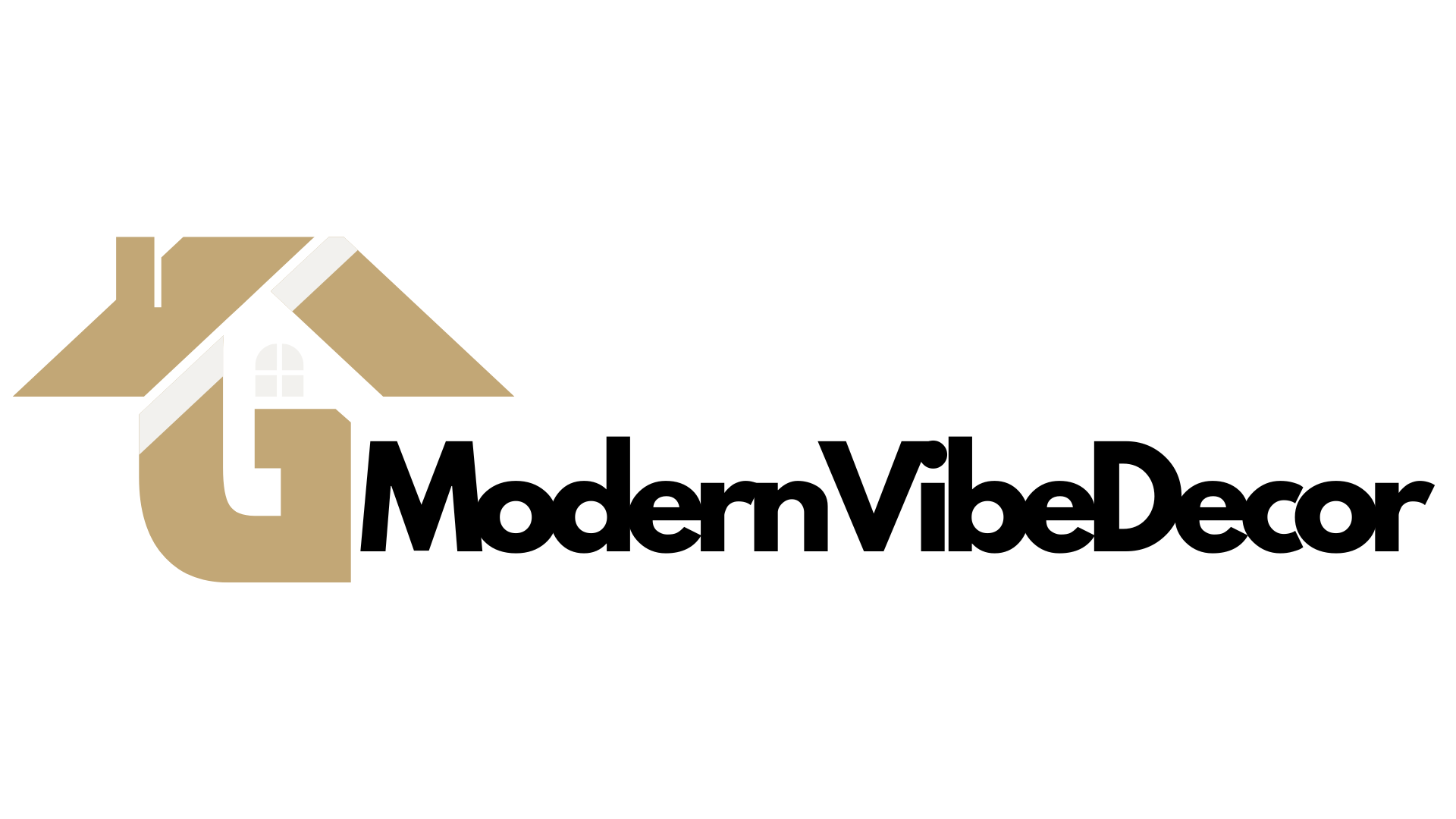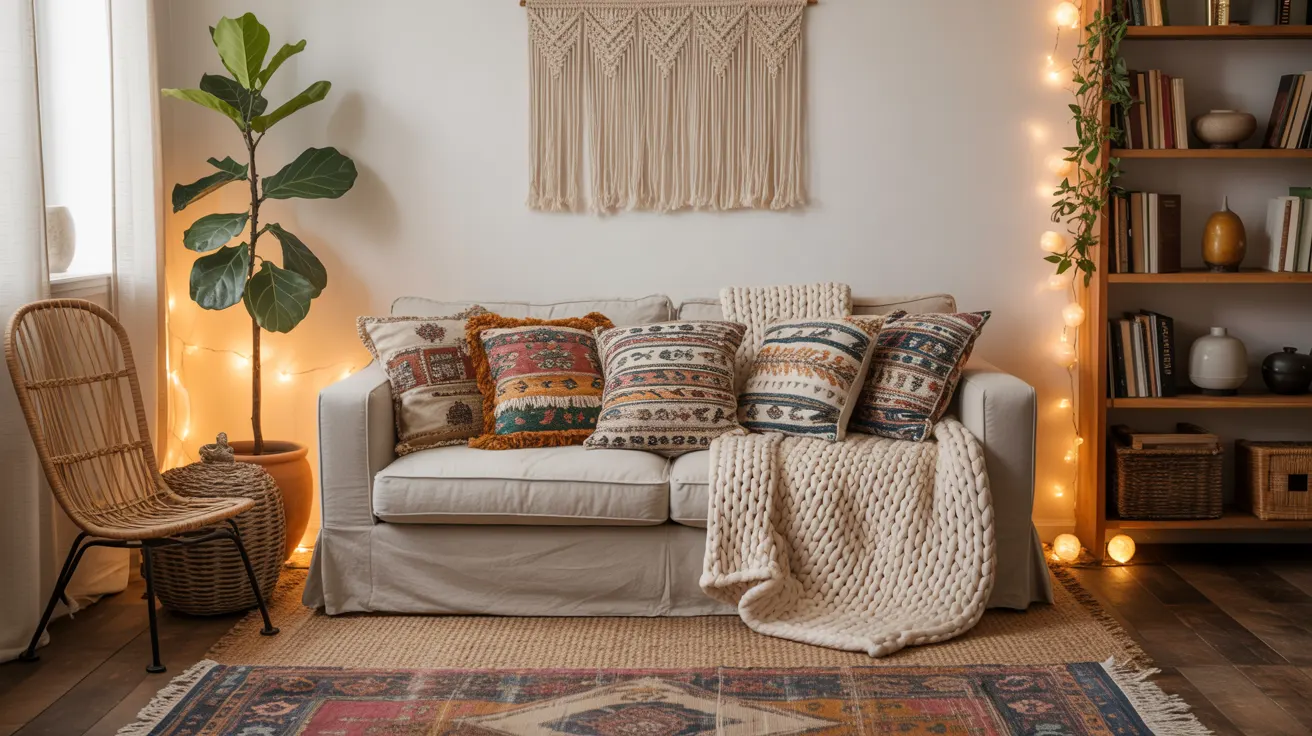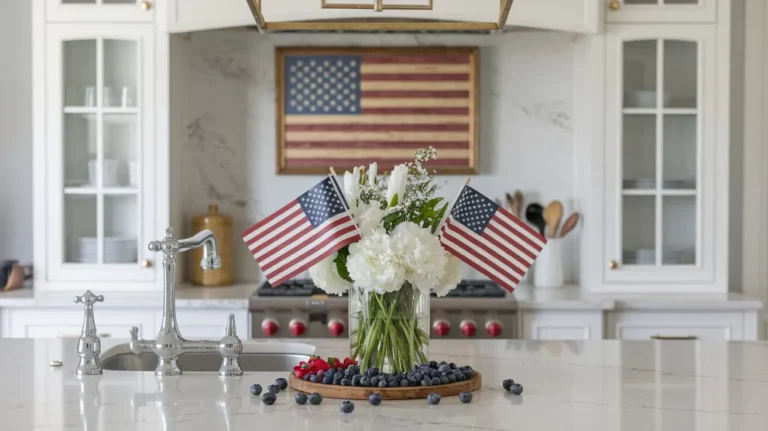Let’s be honest—scrolling through Instagram these days can feel like an endless parade of the same beige, minimalist interiors. If you’re craving something with a bit more soul, personality, and downright joy, it might be time to embrace your inner bohemian.
Boho living rooms aren’t just trending; they’re a rebellion against cookie-cutter design. They celebrate individuality, cultural appreciation, and the beautiful chaos that makes a house feel truly lived-in. The best part? There are no rigid rules—just guidelines to help you create a space that feels authentically yours.
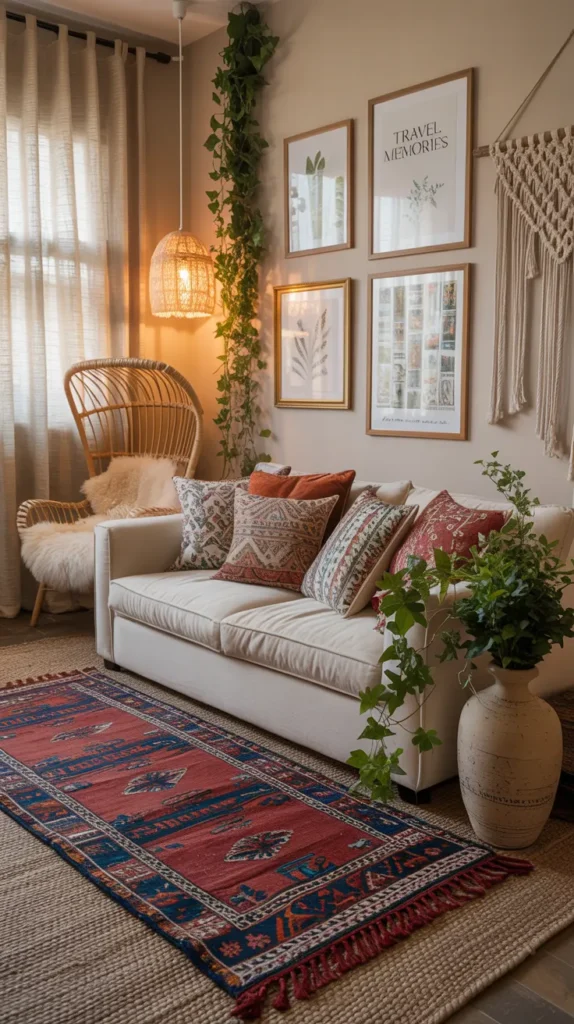
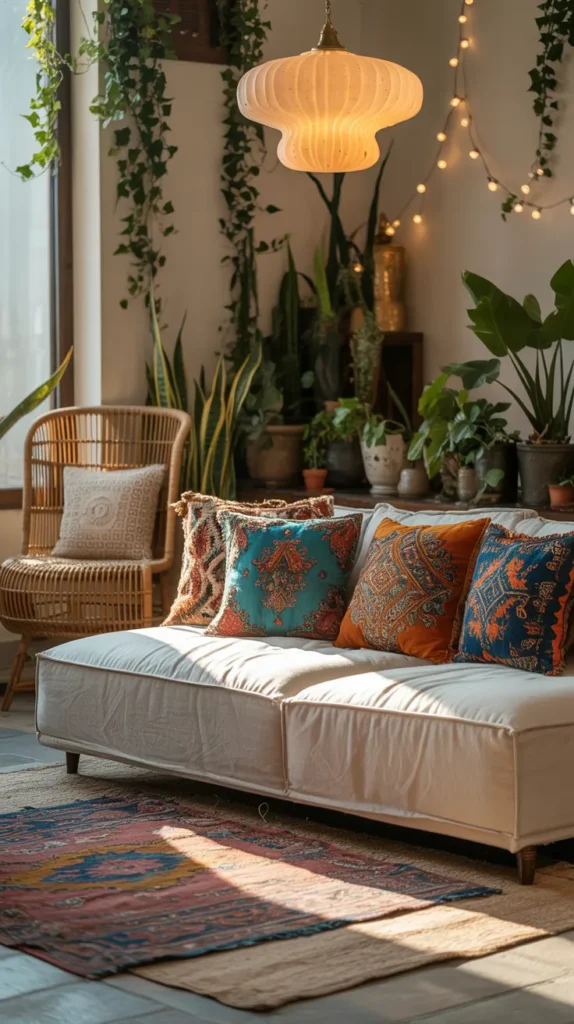
I’ve been obsessed with boho interiors for years (my own living room is a testament to my plant addiction and textile hoarding tendencies), and I’m excited to share some fresh takes on this endlessly adaptable style. Whether you’re looking to go full-on bohemian or just add a touch of free-spirited flair to your space, these ideas will inspire your next design adventure.
The Fascinating History Behind Boho Style (It’s More Rebellious Than You Think)
Before we dive into specific design ideas, let’s talk about where boho style actually came from—because understanding its roots makes the aesthetic all the more meaningful.
The term “bohemian” originally referred to people from Bohemia (now part of the Czech Republic), but in early 19th century Paris, it became associated with artists, writers, and intellectuals who lived unconventional, often financially precarious lives in pursuit of their creative passions. These original bohemians rejected mainstream society’s emphasis on material wealth and conventional career paths.
Their living spaces naturally reflected this countercultural philosophy—filled with found objects, gifts from fellow artists, treasures from travels, and furnishings acquired second-hand out of necessity. Nothing matched perfectly, everything had a story, and the overall effect was layered, personal, and decidedly unlike the homes of the bourgeoisie.
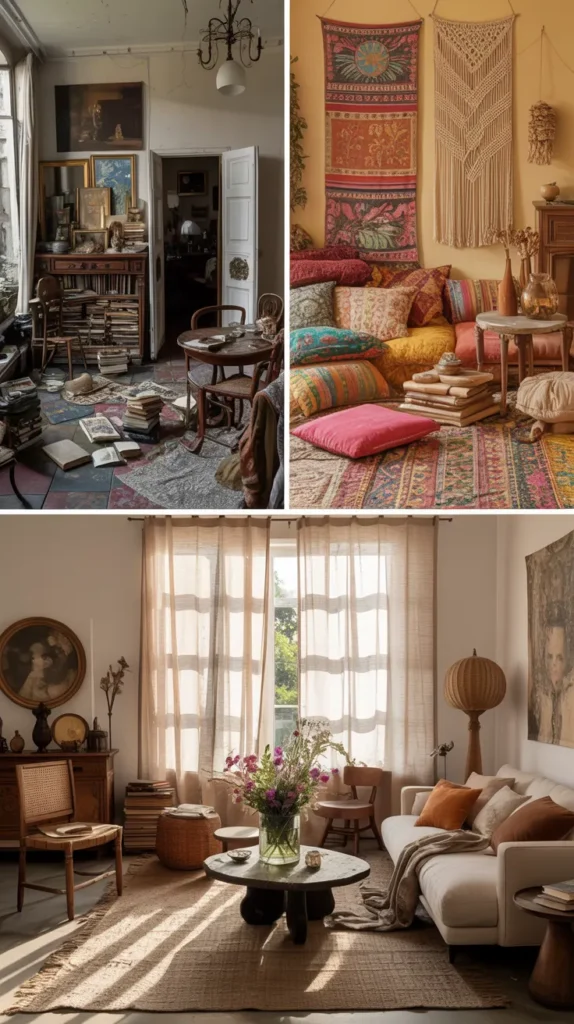
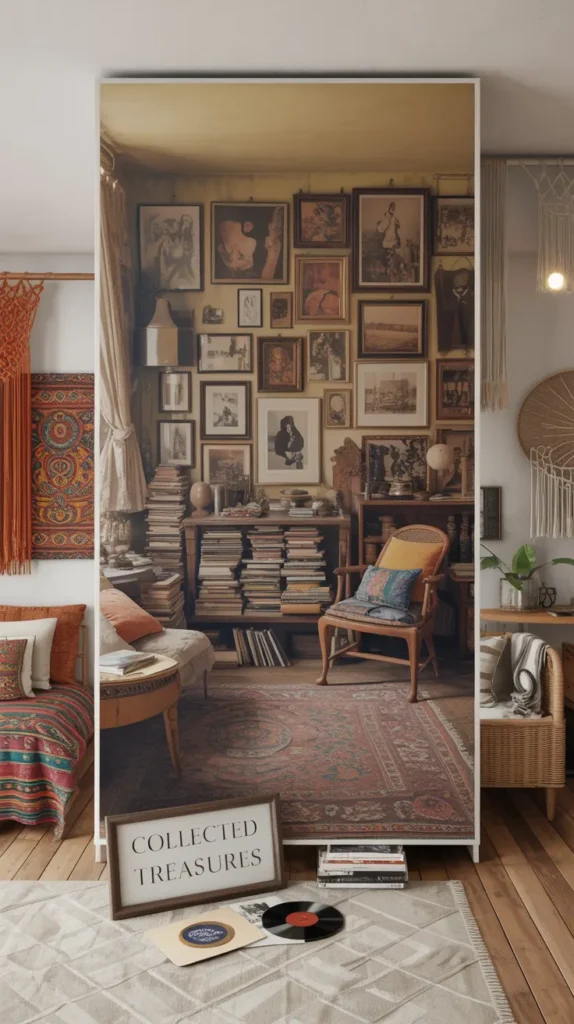
Fast forward to the 1960s and 70s, and bohemian style experienced a major revival during the hippie movement. Once again, it represented a rejection of societal norms and mass production in favor of handcrafted goods, cultural appreciation, and self-expression.
Today’s boho interiors carry this same spirit of rebellion against the mainstream, though ironically, they’ve become quite popular! The contemporary bohemian home celebrates authenticity, cultural diversity, comfort over perfection, and personal expression over trends—values that feel particularly relevant in our increasingly homogenized, digital world.
Pro tip: Knowing this history helps explain why true boho spaces can’t be purchased as a matching set from a catalog. The most authentic bohemian interiors evolve over time as you collect pieces that speak to you, rather than being decorated all at once.
Modern Boho: Where Clean Lines Meet Free-Spirited Charm
If traditional bohemian style feels a bit too chaotic for your taste, modern boho might be your perfect match. This approach combines the eclectic spirit of bohemian design with the cleaner lines and more restrained palette of contemporary interiors.
In a modern boho living room, you’ll typically find:
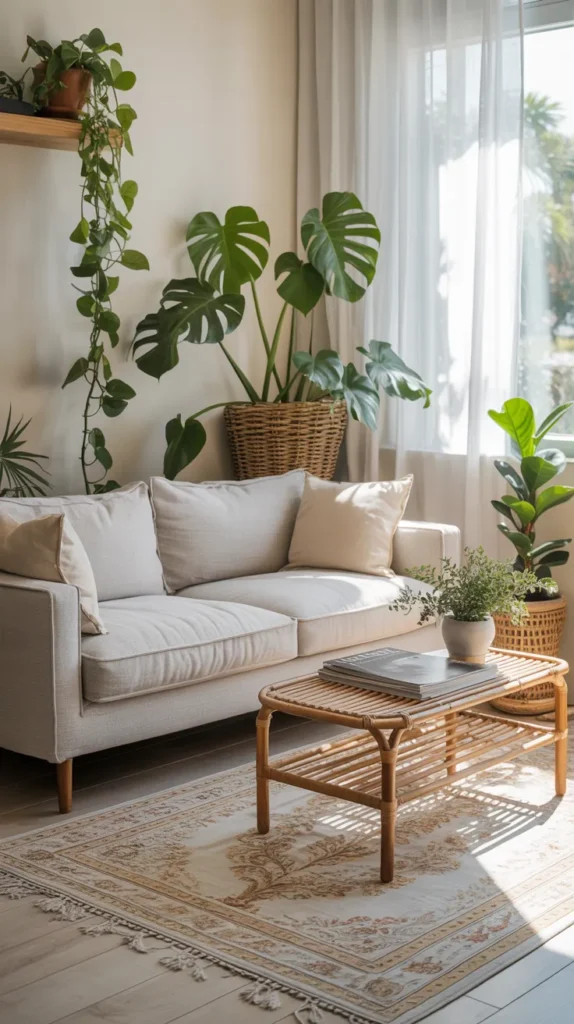
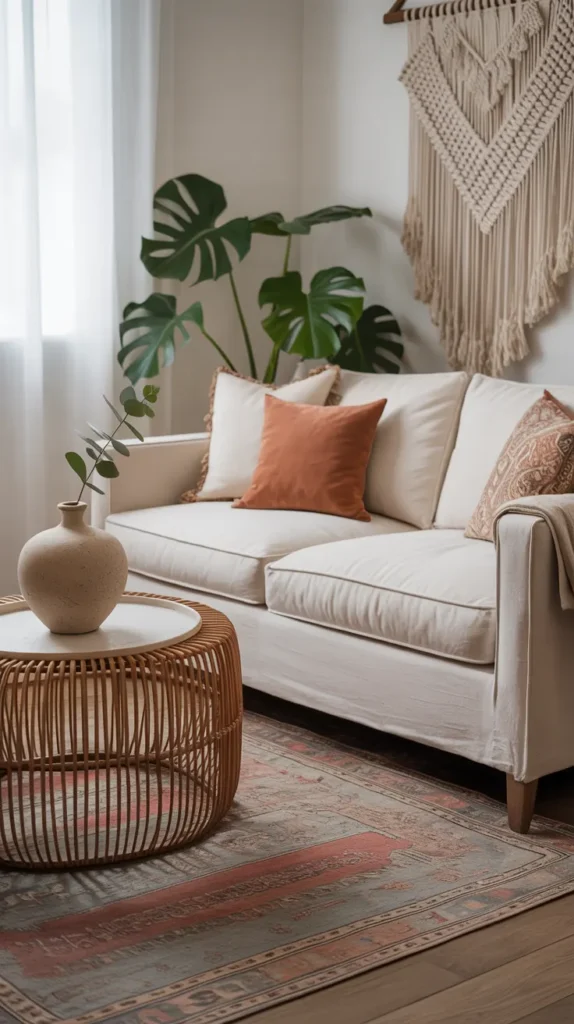
- A neutral base (think white walls, natural wood floors, simple furniture silhouettes)
- Bold textiles used as intentional accents rather than covering every surface
- A more curated collection of decorative objects
- Plants as a major design element (the more the merrier!)
- Thoughtful negative space that allows statement pieces to shine
What I love about modern boho is how accessible it feels for those transitioning from more minimal interiors. You don’t have to embrace pattern-on-pattern-on-pattern to capture the bohemian vibe. Sometimes it’s as simple as adding a statement vintage rug, a collection of plants in interesting pots, and a few textural elements like a macramé wall hanging or a rattan chair.
I helped a friend transform her stark modern apartment into a modern boho oasis last year. The biggest impact came from layering in natural textures—a chunky jute rug, linen curtains, a leather pouf, and a collection of ceramic planters. Despite adding very little color, the space immediately felt warmer, more interesting, and distinctly bohemian in spirit.
Pink and Orange Boho: Unexpected Color Combinations That Actually Work
If playing it safe with color isn’t your thing, boho style welcomes your boldness with open arms. One particularly striking combination that screams bohemian confidence is pink and orange—warm, vibrant hues that create spaces that feel alive with energy.
To create a pink and orange boho living room:
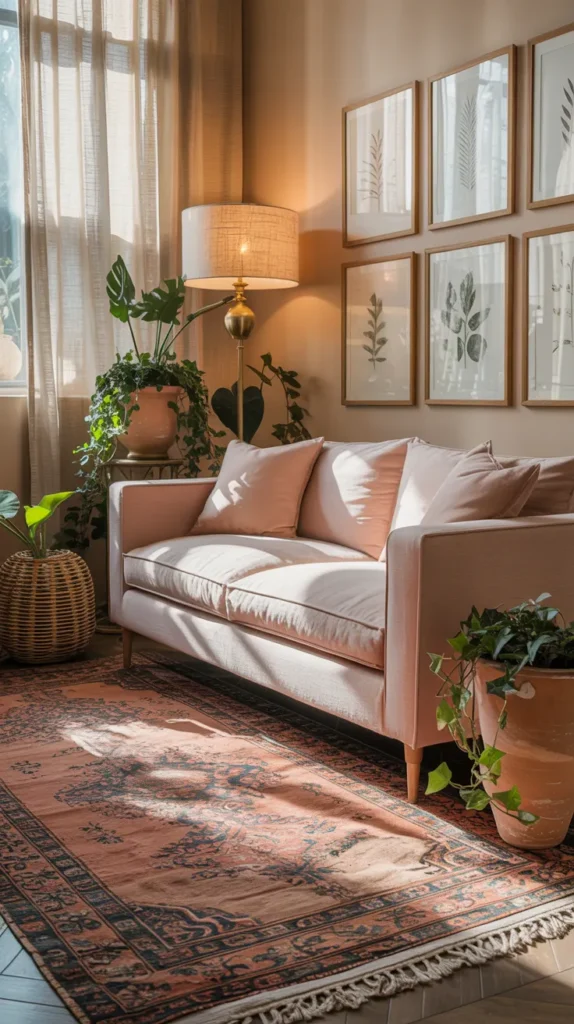
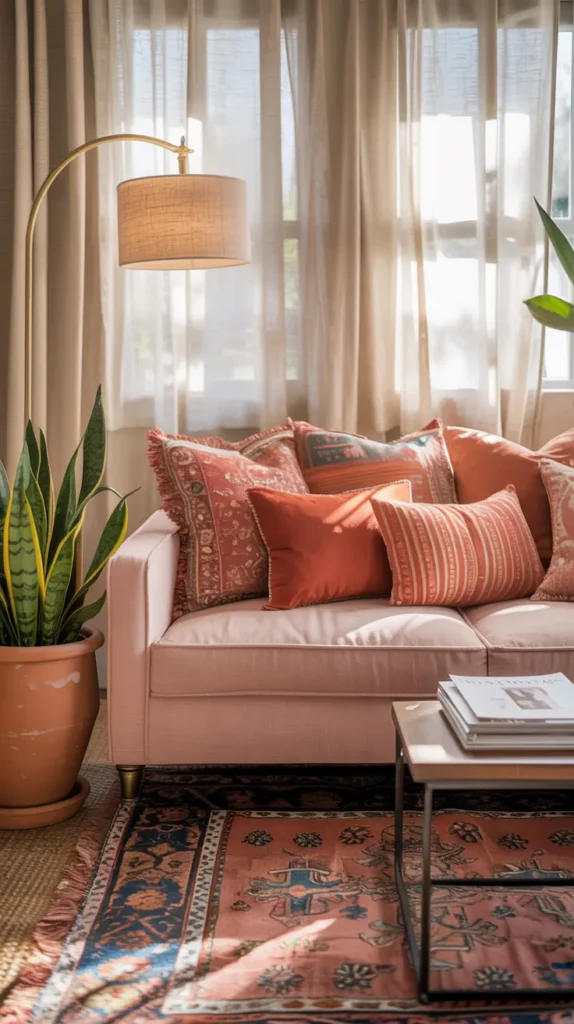
- Start with a statement rug that incorporates both colors
- Layer in textiles like cushions and throws in complementary shades
- Balance the vibrancy with plenty of natural materials like wood and rattan
- Add plants with interesting foliage to create contrast against the warm palette
- Include metallic accents (particularly brass) to elevate the look
What makes this color combination work so well in boho spaces is the layered, collected approach. Rather than flat expanses of solid color, bohemian interiors feature these hues in patterns, textiles, and smaller accents that blend together harmoniously despite their boldness.
I recently spotted a pink and orange boho living room that took my breath away—it featured a vintage Moroccan rug in faded orange and pink tones, a blush linen sofa, terracotta pots filled with greenery, and brass accents throughout. The colors should have clashed, but in this layered context, they created a space that felt both energizing and surprisingly sophisticated.
Boho Chic: Elegance Meets Eclectic
Who says bohemian has to mean casual? Boho chic takes the free-spirited essence of bohemian style and elevates it with more refined elements, creating spaces that feel simultaneously elegant and relaxed.
The key elements of a boho chic living room include:
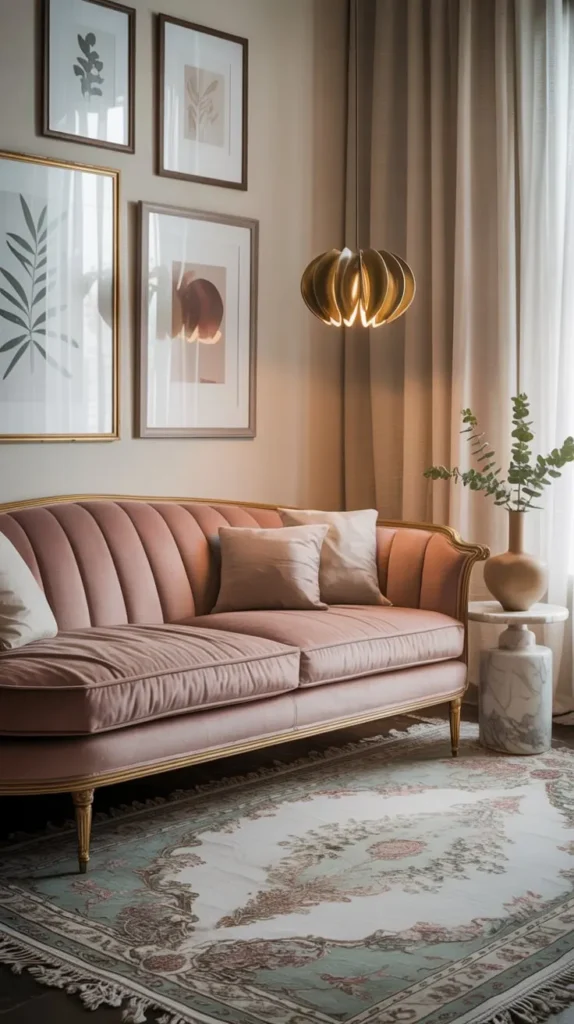
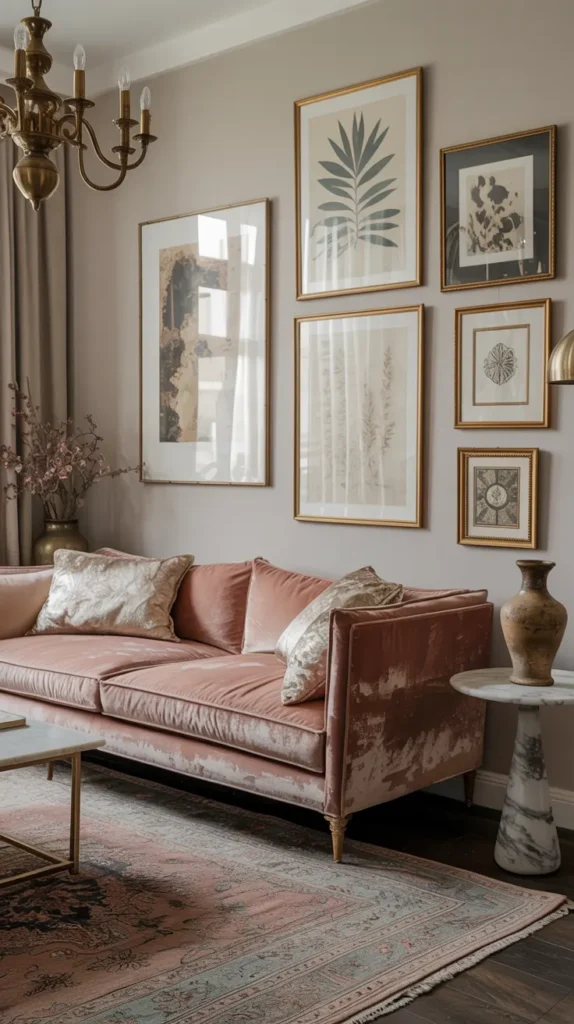
- Higher-end materials and finishes (think velvet upholstery, silk cushions, brass details)
- A more restrained color palette, often featuring pastels and neutrals
- Vintage pieces with elegant lines
- Statement lighting like a chandelier or sculptural pendant
- Art that makes an impact, whether through size, framing, or content
What distinguishes boho chic from other elegant styles is its continued embrace of global influences, texture mixing, and personal expression. The sophistication doesn’t come from matching sets or perfect symmetry, but from thoughtful curation and quality materials.
One of my favorite examples of boho chic was a living room centered around a blush pink velvet sofa, a vintage Persian rug in muted tones, and a stunning brass chandelier. The owners had incorporated family heirlooms alongside contemporary pieces, creating a space that felt both timeless and deeply personal.
Pattern Play: Mixing Prints Like a Pro
If there’s one element that defines bohemian interiors, it’s the fearless mixing of patterns. In a world where design often plays it safe, boho living rooms embrace pattern complexity with open arms.
Some pattern-mixing strategies that work beautifully in boho spaces:
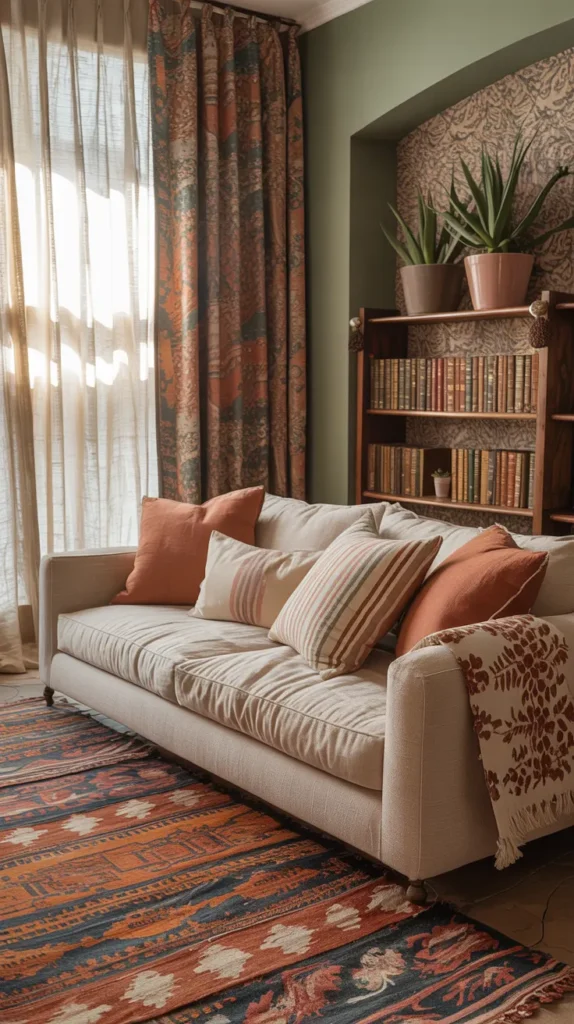
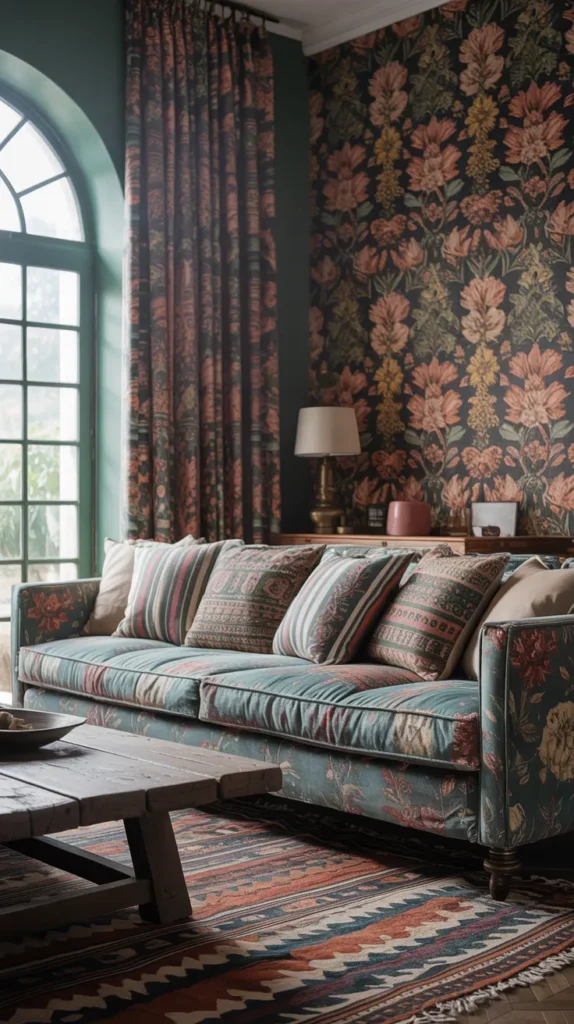
- Combine patterns of different scales (large, medium, and small)
- Mix organic patterns (florals, paisleys) with geometric ones
- Use patterns that share at least one color to create cohesion
- Layer patterned textiles over more subtle furnishings
- Consider the negative space between patterned elements
The trick to successful pattern mixing is maintaining some element of restraint amidst the creative chaos. This might mean limiting your color palette while going wild with pattern varieties, or focusing pattern on textiles while keeping walls and large furniture more subdued.
I’ve noticed that the most successful patterned boho living rooms often start with a statement rug that incorporates multiple colors. This piece becomes the “roadmap” for the room’s palette, making it easier to select additional patterns that will harmonize with the space.
Color Explosion: Vibrant Boho That Feels Cohesive, Not Chaotic
While some boho spaces lean neutral, others embrace color with unrestrained enthusiasm. Creating a colorful bohemian living room that feels intentional rather than overwhelming requires some thoughtful planning.
For a colorful boho space that works:
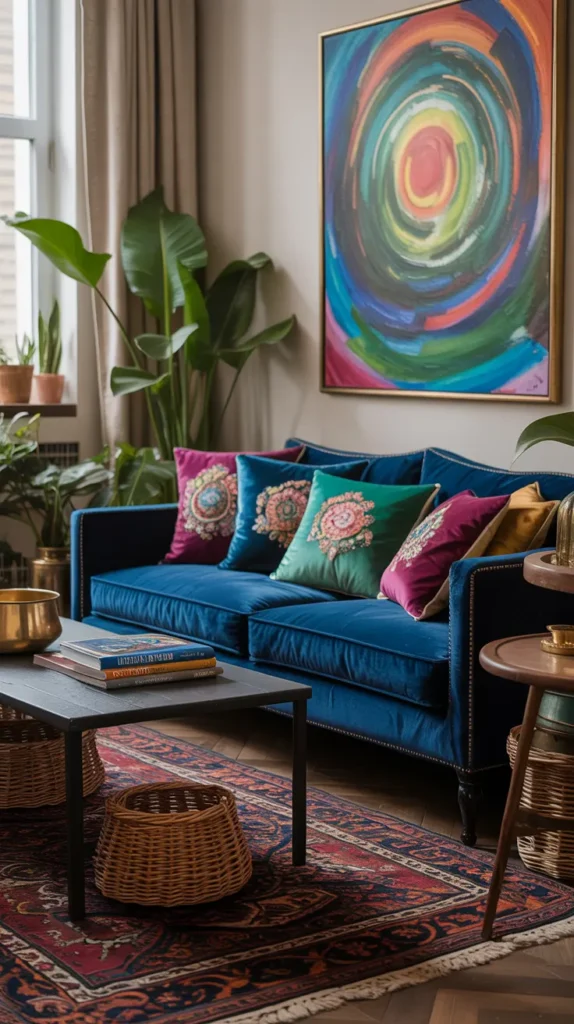
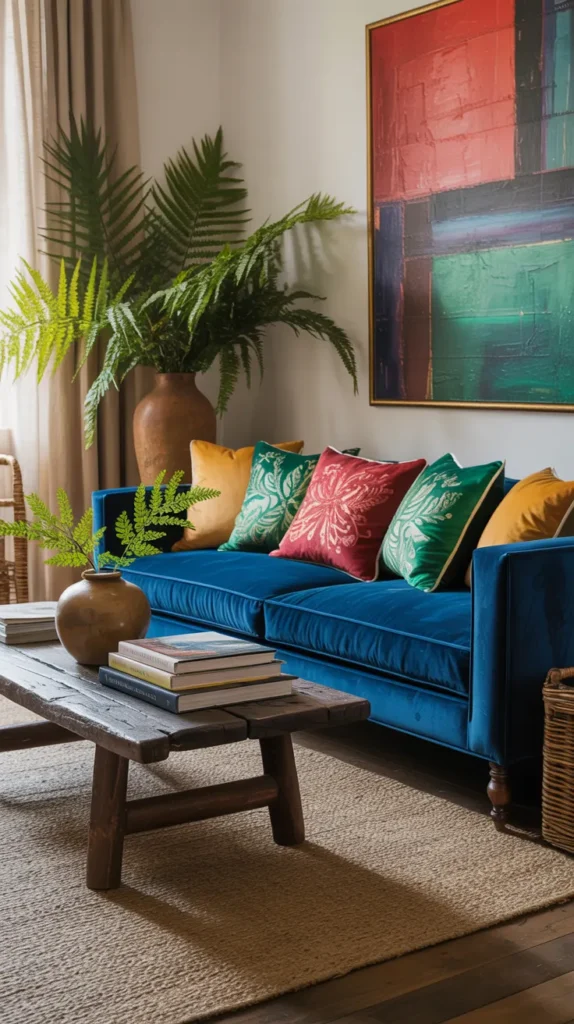
- Choose a color story with 3-5 main hues that repeat throughout the space
- Include plenty of natural elements to ground the vibrant colors
- Make sure some surfaces (like walls or larger furniture) provide visual rest
- Use colors that have similar saturation and intensity levels
- Layer in plenty of texture to add dimension beyond just color
One approach I particularly love is using jewel tones (emerald, sapphire, amethyst, ruby) as the foundation of a colorful boho palette. These rich, saturated colors have an inherent sophistication that helps the space feel intentional despite the rainbow effect.
A friend recently transformed her living room with a vibrant boho approach, using a deep teal sofa as the anchor piece. From there, she added pillows in magenta, orange, and royal blue, artwork featuring similar hues, and brass accents throughout. The color-lover’s paradise remained cohesive because each element contained hints of the other colors in the room.
Rug Layering: The Ultimate Boho Power Move
If I had to identify the single most transformative element in a bohemian living room, it would be the rugs. No other style embraces rug layering quite like boho, and for good reason—the technique instantly adds warmth, texture, and that collected-over-time feeling that defines bohemian spaces.
Tips for mastering the art of rug layering:
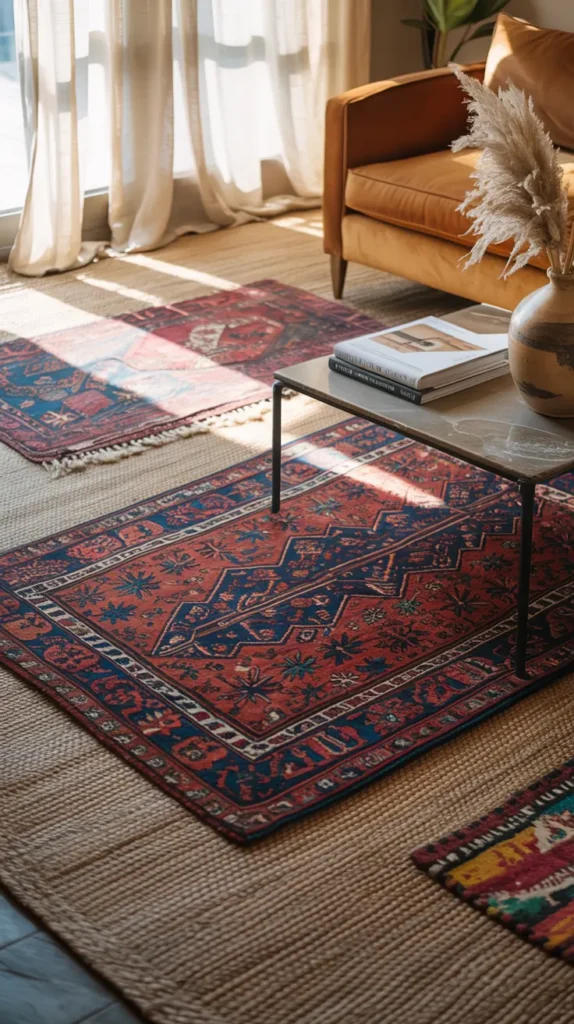
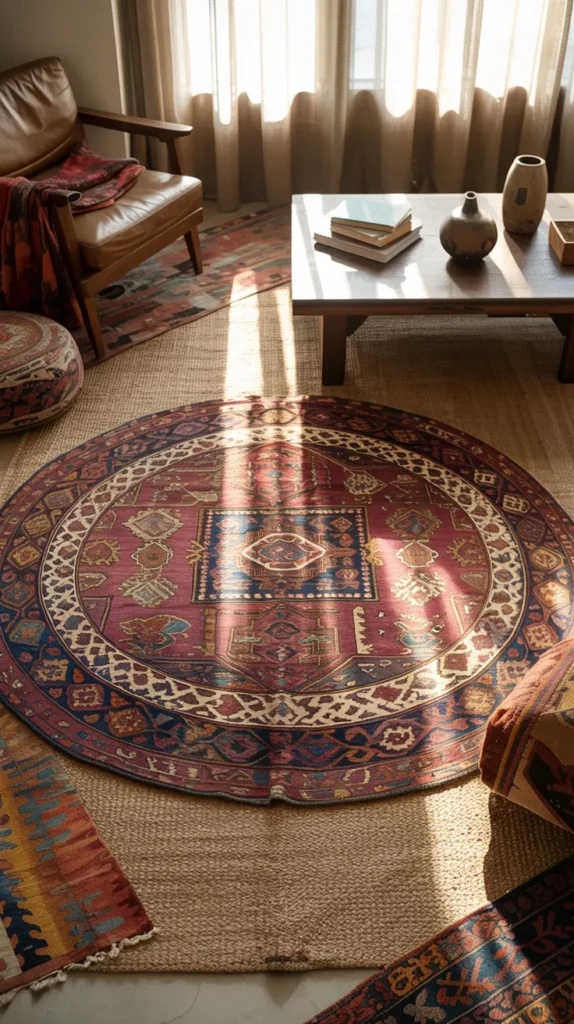
- Start with a larger, simpler base rug (jute and sisal work beautifully for this purpose)
- Layer smaller vintage or patterned rugs on top, either centered or at an angle
- Don’t be afraid to overlap multiple smaller rugs for a truly bohemian look
- Ensure the layered rugs are thin enough to avoid a tripping hazard
- Use rug pads to prevent slipping and extend the life of your textiles
Beyond the visual impact, layered rugs serve the practical purpose of defining different areas within a larger space. A conversation area might feature one layered composition, while a reading nook showcases another, creating natural divisions without walls.
I recently helped a client transform a cavernous living room by layering three vintage rugs over a large jute base. The space went from echo-y and impersonal to warm and inviting overnight, despite making no other changes to the furniture or decor.
Wicker and Rattan: Natural Materials with Major Character
Natural materials are essential to bohemian design, and none are more iconic than wicker and rattan. These versatile materials add texture, warmth, and organic shapes that perfectly complement the boho aesthetic.
Ways to incorporate wicker and rattan into your boho living room:
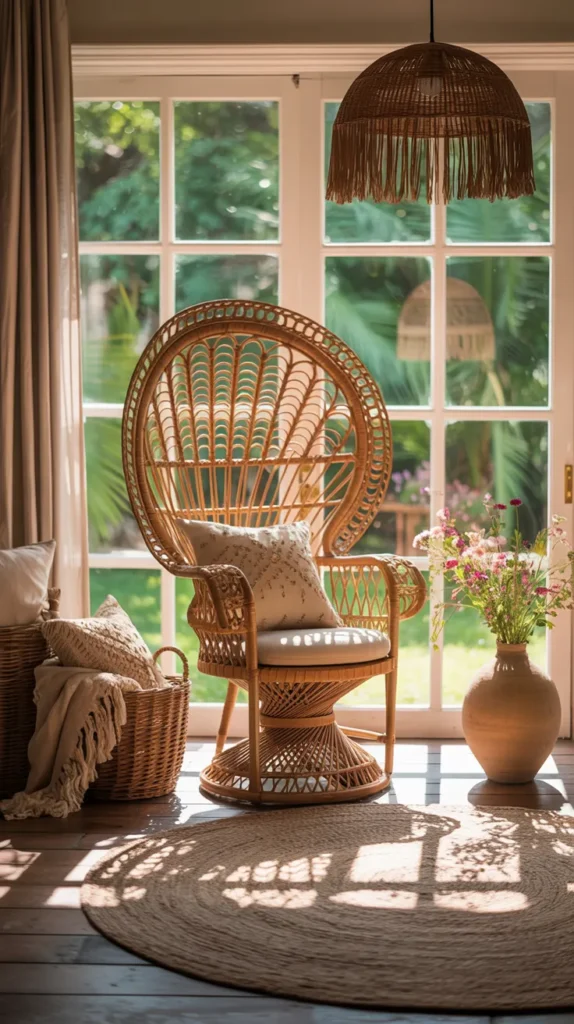
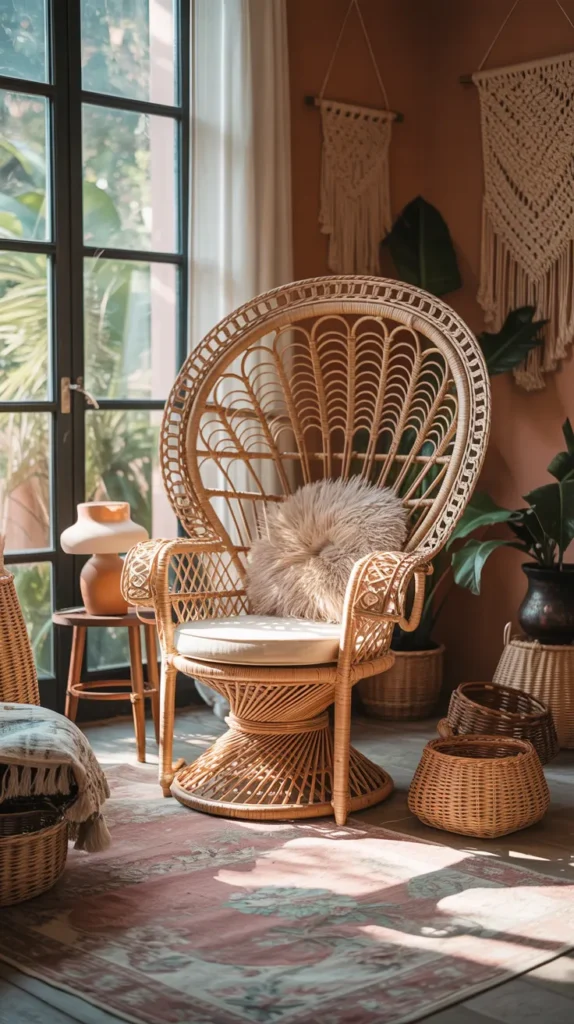
- Statement seating (peacock chairs, egg chairs, or papasan chairs)
- Coffee tables and side tables with interesting woven patterns
- Lighting fixtures that cast beautiful shadow patterns
- Storage solutions like baskets and magazine holders
- Decorative elements like mirror frames or wall art
What makes these materials so perfect for boho spaces is their connection to global design traditions and handcraftsmanship. Unlike mass-produced furniture, each wicker or rattan piece feels unique, with slight variations that add character.
The most successful bohemian interiors use wicker and rattan as accents rather than overwhelming the space. A single statement chair or pendant light can make a stronger impact than filling the room with matching rattan furniture, which might veer into “theme park” territory.
Making Boho Your Own: It’s About the Story, Not the Stuff
The magic of bohemian design isn’t really about specific decorative elements—it’s about creating a space that tells your personal story. True boho living rooms evolve over time, filled with objects acquired during travels, gifted by loved ones, or discovered in unlikely places.
To create a boho living room that feels authentically yours:
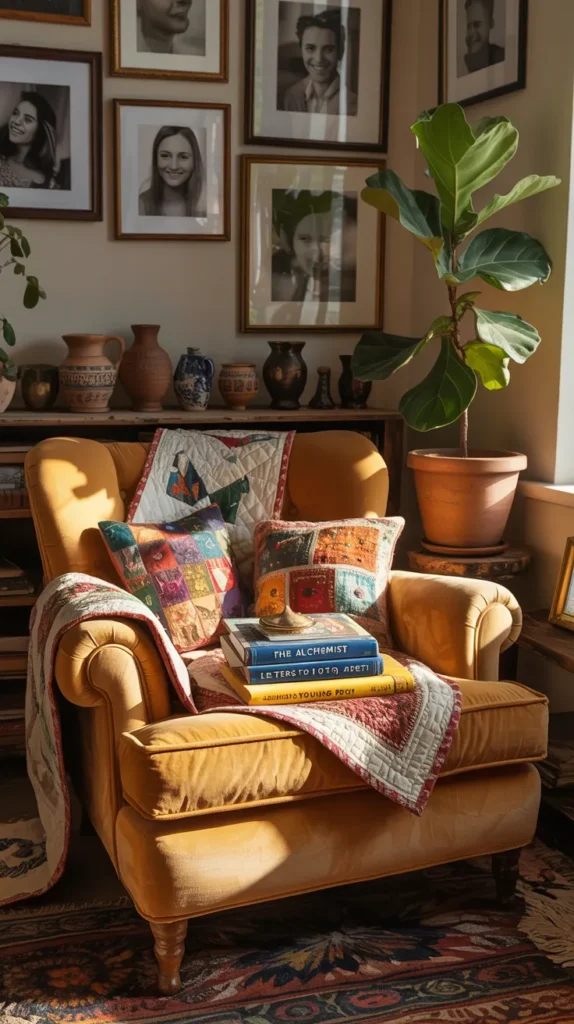
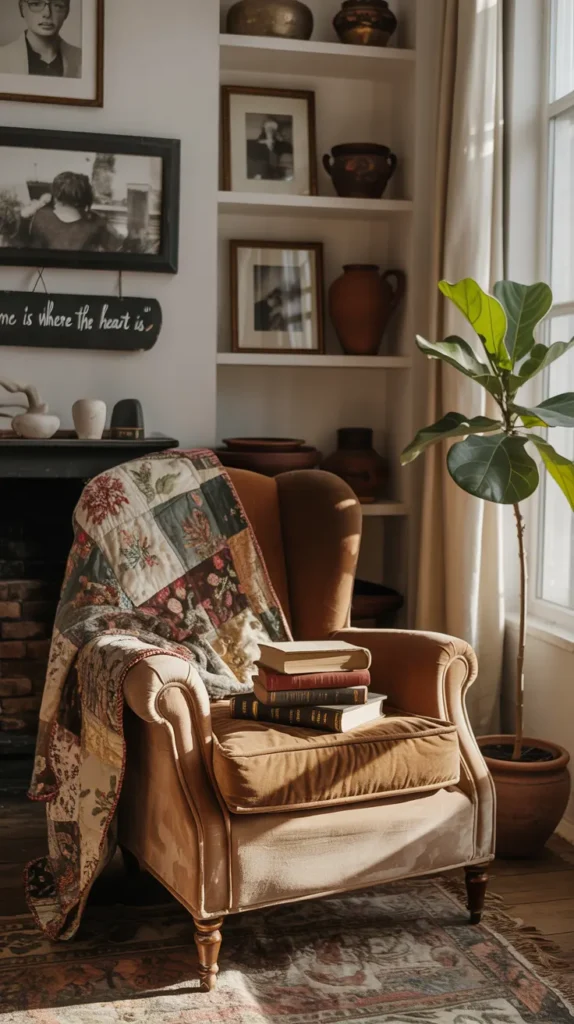
- Incorporate pieces with personal significance over perfect design pedigree
- Support artisans and small businesses when acquiring new items
- Allow yourself to be drawn to things that speak to you, even if they don’t match your existing decor
- Embrace imperfection—worn edges, patina, and signs of use add character
- Let your space evolve naturally rather than decorating all at once
I’ve noticed that the most compelling bohemian spaces are owned by people who prioritize experiences over possessions—their homes become natural extensions of their adventurous spirits, filled with mementos from their journeys both physical and metaphorical.
My own living room features a collection of ceramics made by friends, textiles gathered during travels, plants propagated from cuttings given by fellow enthusiasts, and furniture discovered at estate sales and flea markets. Each piece has a story, and together they create a space that could belong to no one else.
Final Thoughts: Boho Is a Feeling, Not a Formula
As bohemian style has gained popularity, it’s easy to fall into the trap of thinking there’s a “correct” way to do boho. The irony, of course, is that standardization is the antithesis of what bohemian design has always represented.
True bohemian spaces feel effortless and evolved, not like carefully constructed sets from a catalog photoshoot. They’re comfortable, personal, and slightly unpredictable—just like the best conversations and most memorable gatherings.
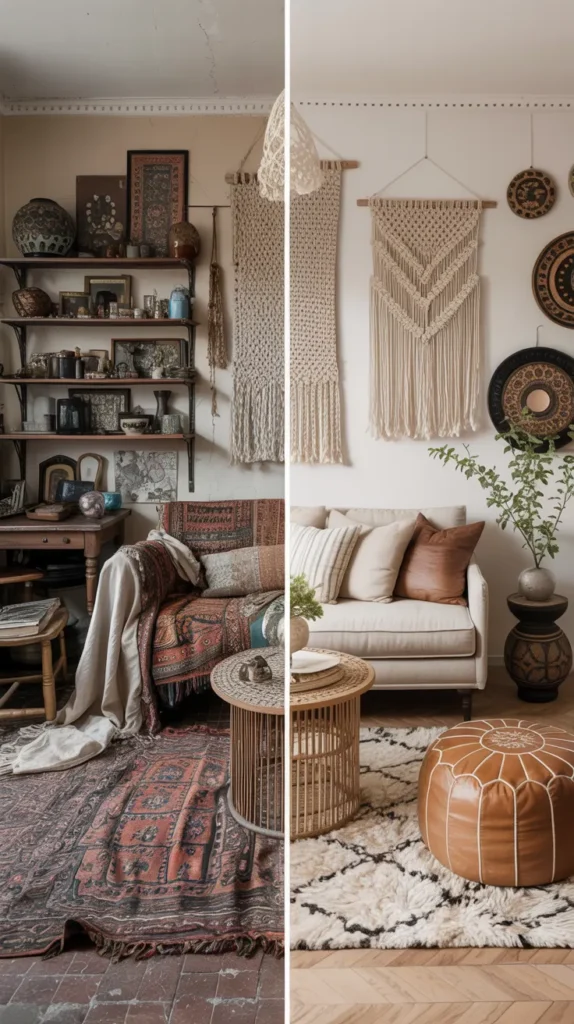
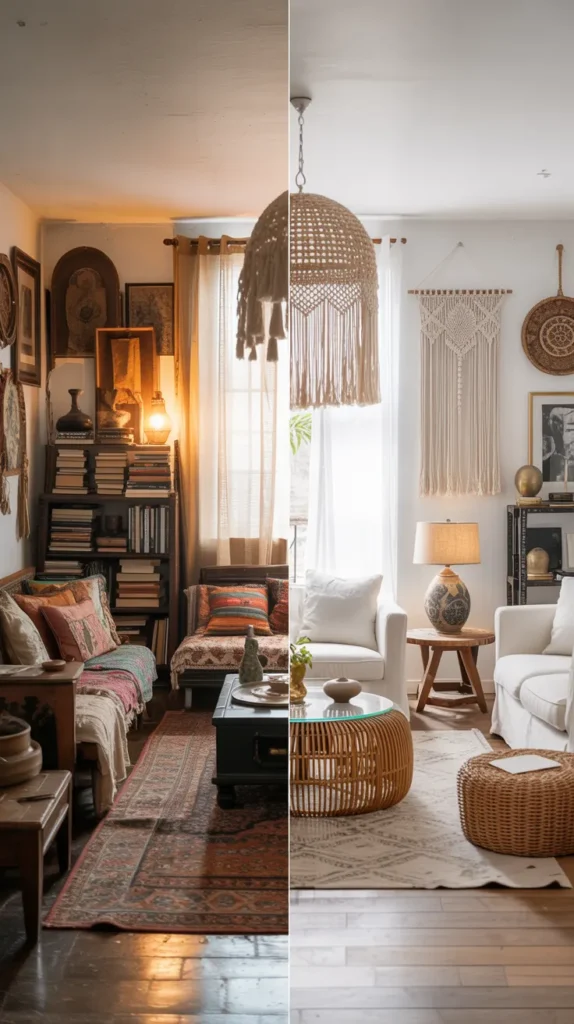
So as you explore these boho living room ideas, remember that the most authentic approach is to use them as inspiration rather than instruction. Collect objects that resonate with you, arrange them in ways that make you happy, and create a space that feels like home in the deepest sense of the word.
After all, the essence of bohemian style isn’t about having the right macramé wall hanging or vintage Moroccan rug—it’s about creating a space that celebrates creativity, cultural appreciation, and the beautiful messiness of a life well-lived.
